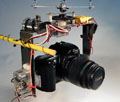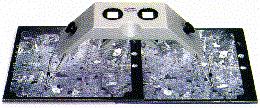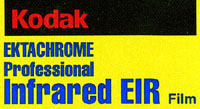
| Cameras and Rigs James S. and Susan W. Aber |

| Cameras and Rigs James S. and Susan W. Aber |
The camera is a point-and-shoot Samsung Maxima Zoom (38-105 mm) that is secured in the cradle with a tripod mounting screw. A "landscape" button for infinite focus is located on the camera front. This button is depressed by a mini shock cord, which also serves as a safety strap to hold the camera in the cradle. The wide-angle mode (f = 38 mm) is used most of the time, and standard mode (f = 45-50 mm) is utilized occasionally.
The camera has an advanced intervalometer, which can be set to take photos at intervals from 10 seconds up to 60 minutes. The usual setting is one or two minutes between photographs. This allows time to move the camera by walking to a new location or by adjusting the camera altitude (letting out/taking in line). The camera continues to take photos at the preset interval until it is turned off or runs out of film.
| Subject | Location | Subject | Location| KAP rig and kite | Emporia, Kansas | Picavet suspension | Lake Kahola, Kansas | Camera and cradle | Lake Kahola, Kansas | View down the line | Chadron, Nebraska | Gear packing | Halstead, Kansas | KAP rig and large kite | Emporia, Kansas | |
|---|
Extensive testing has shown the system to be quite stable in flight. Total weight is only 20 ounces (570 g), so with a big kite it can fly in wind as light as 5-7 mph. It also flies well in stronger wind, up to 20-25 mph. Radio controls are very responsive, although the small batteries have a limited working time before they discharge. The antenna on the KAP rig serves to "point" the camera via observation with binoculars.
The need for advanced camera capabilities led to design and contruction of another radio-controlled KAP rig by Brooks Leffler (2/00). This heavy-duty rig is based on the Canon EOS RebelX, which is a 35-mm, full-featured, SLR camera. This camera was selected because its plastic body makes it quite light. The camera is equiped with a plastic zoom lens (35-80 mm focal length), which is also relatively light. The main frame is titanium with aluminum used for other frame components and the Picavet cross. Standard servos with brass gears are powered by a 250 mA battery pack. This rig has full capability for horizontal pan (0-360°) and vertical tilt (depression angle 15° to 90°).
In addition to the regular zoom lens, we utilize super-wide-angle (19 mm) and fisheye (14 mm) lenses for special effects. Although somewhat heavier, these lenses create broad fields of view that can be quite dramatic--see fisheye lens. 
Titanium-frame, radio-controlled
camera rig by B. Leffler (2000).
Stereo photos allow the viewer to "see" the scene in three dimensions, when photo pairs are viewed through a special device, called a stereoscope. Stereo photography is the basis for accurate measurements and mapping based on principles of photogrammetry. Thus stereo KAP has great potential for scientific surveys and mapping.
 Vertical, stereopair, kite aerial photographs taken over cemetery, Emporia, Kansas. Click on the small image to see full-sized version (129 kb). Photo date 12/98, © J.S. Aber. See another stereopair. The image below shows a Sokkia mirror stereoscope. |
 |
The dual camera rig is relatively heavy at 1.5 kg (53 oz.). In order to save weight, the radio control operates the camera shutters only. Tilt and pan positions of the cameras are set manually on the ground prior to each flight. Given its weight, this rig requires a moderage wind (>10 mph or 15 km/h) to lift it. A yellow filter is used normally on the color-infrared camera, in order to eliminate blue light from exposing the film.
 | More on color-infrared film. |
All text and images © by the authors; last update Jan. 2008.